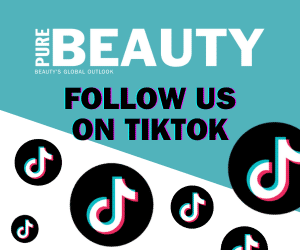Sitting next to me is a new colleague whose screensaver says: “Onward Buttercup, there’s f**kery to spread” – it’s accompanied by a picture of a squirrel riding a horse. That’s what it’s like for a designer working with someone from advertising. I can probably forget about persuading him to use the agency corporate screensaver.
But work with him I must, because even if all my agency’s brand design and packaging ideas are brilliant, it’s my avowed belief that that’s no longer enough. We must now find ideas that unify and inform every expression of our clients’ brands. And that means working with the squirrels.
The role that packaging plays is different from other forms of media, but a brand’s return on its marketing investment is truly maximised when an agency provides a unifying and compelling idea that joins up all the creative dots. Consumers are now utterly connected and expect to find a consistent brand whenever and wherever they come across it. So it’s just not enough to have one ‘beautiful packaging’ creative dot over here that doesn’t join up with the other equally creative, but isolated dots over there in advertising, PR, social media and so on.
In the conventional brand development and marcomms process – and often out of necessity – the visual identity and packaging are set at the beginning, and all other communications are considered almost entirely independently by another agency, far further on down the line. This is just not as effective as it could or should be.
In a recent article in Forbes about ‘How agencies are putting themselves out of business’, Keenan Beasley says he hates the term ‘agency of record’ – it should be ‘agency of return’. Who doesn’t remember some stunningly creative ads from the past, without remembering which brand it was actually for? Creative awards count for nowt if there’s no tangible and measurable impact from the work, so it’s good to see that the agency world is finally waking up to the importance of the client’s return on investment.
Budgets are shrinking and a brand’s exposure is incredibly fragmented. For every Superbowl ad break watched by half the US, there are another 364 days of the year where people channel surf through hundreds of TV channels – or their fingers are poised on the DVR’s fast-forward button as soon as the ads come up. It means every brand moment has to be on the money and working incredibly hard to engage consumers.
My agency has always thought about how a brand will find its expression off-pack. But we often did this from a stylistic point of view. Although this helps unify the brand visually, it’s somewhat superficial, because an idea expressed beautifully will always be bigger than a style alone. Embedding advertising talent into the brand design process – as I’ve just done – uncovers ideas that give brands the best opportunity for success in the most efficient and cost-effective manner. No duplicate meetings, no duplicate expenses, just a beautiful idea carried through into every brand communication.
There’s nothing new about adopting an integrated approach, but the problem has always been how to go about it in practice. And it’s rare that it’s tackled at the brand creation stage – integration usually means ad agencies taking an already created brand and then just doing everything else afterwards.
Our new holistic approach probably isn’t going to work for all brands. Despite all their efforts at creating loop teams and encouraging multi-agency collaboration, major global brands might struggle with this because of the siloed manner in which they buy marketing services, along with their divisional ‘design’ and ‘delivery’ structures.
But there are big opportunities for challenger brands and smaller businesses that are nimble enough to embrace the approach. The best of them do it instinctively. Top of my mind are The Konjac Sponge Co (facial and body cleansing products) and White Hot (hair care for silver or grey hair). Both companies completely get it. They’ve developed a unified message that uses bloggers and social media to spread the word, rather than traditional media. And some big brands are working very hard at it. Unilever’s Dove with ‘real beauty’ is the best example we could think of in the beauty arena. Outside beauty, Coca-Cola’s ‘joy’ and Red Bull’s ‘energy’ show how a unifying thought ensures not only consistency but also creatively appropriate brand expressions.
How this will spread in the beauty industry and beyond is yet to play out. But one thing is clear, it will spread… and I’m ready for it. So, I’d best saddle up the horse and be off to spread some more f**kery!




